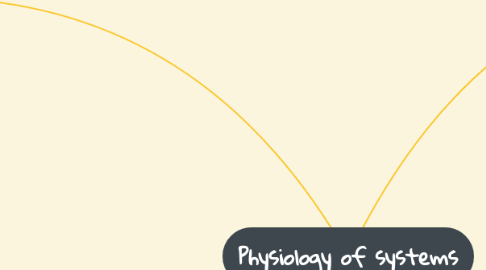
1. Digestive system
2. Nervous system
2.1. Structures of the Nervous system
2.1.1. Neurons
2.1.2. Glial Cells
2.1.3. Neurotransmitters
2.1.4. Perfusion of the brain
2.2. Central Nervous system (CNS)
2.3. Peripheral Nervous system (PNS)
3. Endocrine System
3.1. Hypothalamus
3.1.1. TRH (Thyrotropin Releaseing Hormone)
3.1.2. GHIH (Growth Hormone Inhibiting Hormone)
3.1.3. PIH (Dopamine),(Prolactin Inhibiting Hormone)
3.1.4. CRH (Corticotropin Releasing Hormone)
3.1.5. GHRH (Growth Hormone Releasing Hormone)
3.1.6. GnRH (GonadoTropin Releasing Hormone)
3.1.7. PRH (Prolactin Releasing Hormone)
3.2. Pituitary Gland (Hypophysis)
3.2.1. Anterior Pituitary (AdenoHypophysis)
3.2.1.1. TSH (Thyroid stimulating hormone);Thyrotropin
3.2.1.2. PRL (Prolactin)
3.2.1.3. FSH (Follicle Simulating Hormone)
3.2.1.4. LH (Luteinizing hormone)
3.2.1.5. ACTH ( AdrenoCorticotropic Hormone); Corticotropin
3.2.1.6. GH (Growth Hormone)
3.2.1.6.1. Liver and other tissues
3.2.1.6.2. Anti insulin actions
3.2.1.6.3. Increases Calcium Absorption in the Gut
3.2.1.6.4. GH Abnormalities
3.2.2. Posterior Pituitary (Neurohypophysis)
3.2.2.1. Oxytocin
3.2.2.2. ADH (Anti Diuretic Hormone )
3.3. Pineal Gland
3.3.1. Melatonin
3.3.1.1. Very important for regulating circadian rhythm.
3.4. Thyroid Gland
3.4.1. Follicles
3.4.1.1. T3,T4 (thyroxine)
3.4.1.1.1. Increase Metabolic rate;Increased O2 consumption and Calorigenic effect (Heat Production)
3.4.1.1.2. In children it stimulates growth
3.4.1.1.3. Secondary Effects to calorigenises
3.4.1.1.4. Increase in appitite
3.4.1.1.5. Stimulate CNS
3.4.1.1.6. Contribute to proper growth of the CNS in children
3.4.1.1.7. Thyroid diseases
3.4.2. Parafolicular cells (C cells)
3.4.2.1. Calcitonin
3.5. Adrenal Glands
3.5.1. Adrenal Cortex
3.5.1.1. Zona glomerulosa
3.5.1.1.1. mineralocorticoids
3.5.1.2. Zona fasciculata
3.5.1.2.1. glucocorticoids
3.5.1.3. Zona reticularis
3.5.1.3.1. gonadocorticoids
3.5.1.4. Diseases Concerning The Adrenal Cortex
3.5.1.4.1. Conn's syndrome (Primary Hyperaldosternism)
3.5.1.4.2. Excessive Cortisol secretion (Cushing’s syndrome)
3.5.1.4.3. Adrenal Androgen Hypersecretion
3.5.1.4.4. Primary adrenocortical insufficiency (Addison's disease )
3.5.2. Adrenal Medulla
3.6. Pancreas
3.6.1. Acinar Cells
3.6.2. Islets of Langerhans
3.6.2.1. Alpha
3.6.2.1.1. Glucagon
3.6.2.2. Beta
3.6.2.2.1. Insulin
